What Is The Most Important Thing That A Population Needs To Survive In A Changing Environment?
The animals that will survive climatic change
(Epitome credit:
Getty Images
)
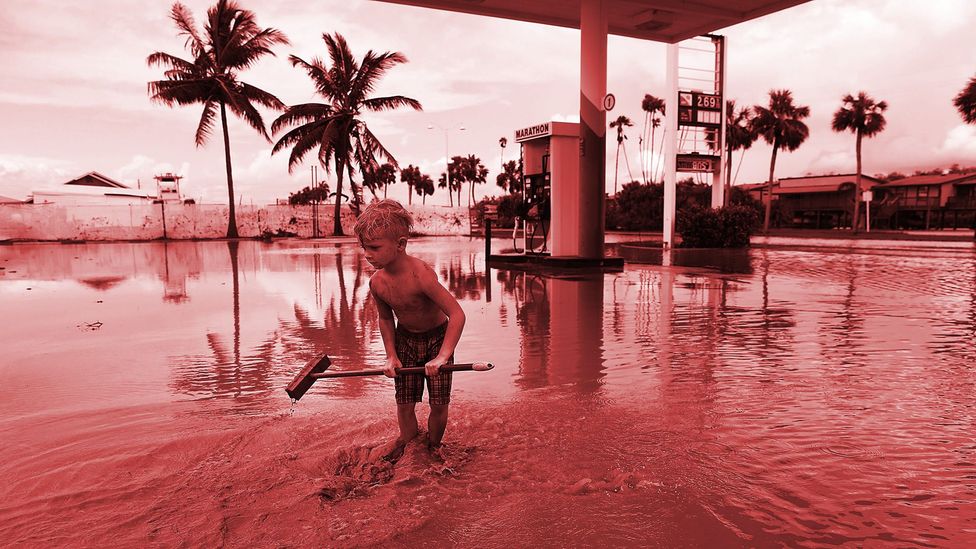
With i in every four species facing extinction, which animals are the best equipped to survive the climate crisis? (Spoiler alert: it'southward probably not humans).
"I don't call up it will be the humans. I think we'll go quite early," says Julie Gray with a express joy. I've simply asked Gray, a plant molecular biologist at the Academy of Sheffield, which species she thinks would be the last ones standing if nosotros don't take transformative activeness on climate modify. Even with our extraordinary capacity for innovation and adaptability, humans, it turns out, probably won't exist amongst the survivors.
This is partly because humans reproduce agonisingly slowly and more often than not just ane or two at a time – as do some other favourite animals, like pandas. Organisms that can produce many offspring apace may take a amend shot at fugitive extinction.
It may seem like just a thought experiment. But discussing which species are more, or less, able to survive climate change is disturbingly concrete. Every bit a blockbuster biodiversity report stated recently, i in every four species currently faces extinction. Much of this vulnerability is linked to climatic change, which is bringing about higher temperatures, sea level rise, more variable conditions and more extreme weather condition, amidst other impacts.
You might also like:
• Could wooden buildings be a climate change solution?
• How catastrophes tin can modify the grade of humanity
• X elementary ways to act on climate change
Some caveats are in gild. While the seriousness of climate modify is undeniable, it's impossible to know exactly how those effects will play out for species vulnerability, specially far into the futurity. Methods of forecasting vulnerability are ever evolving, while express and inconsistent information, plus the circuitous interactions of policies, land-use changes, and ecological furnishings, mean that projections aren't ready in rock. Climatic change vulnerability assessments have had biases and bullheaded spots (but equally humans do more generally). (Read more virtually how our cognitive biases prevent climate action). Moreover, the indirect effects that are responsible for many climate alter impacts on populations, such as in the nutrient chain, are more than complex to model than straight effects.
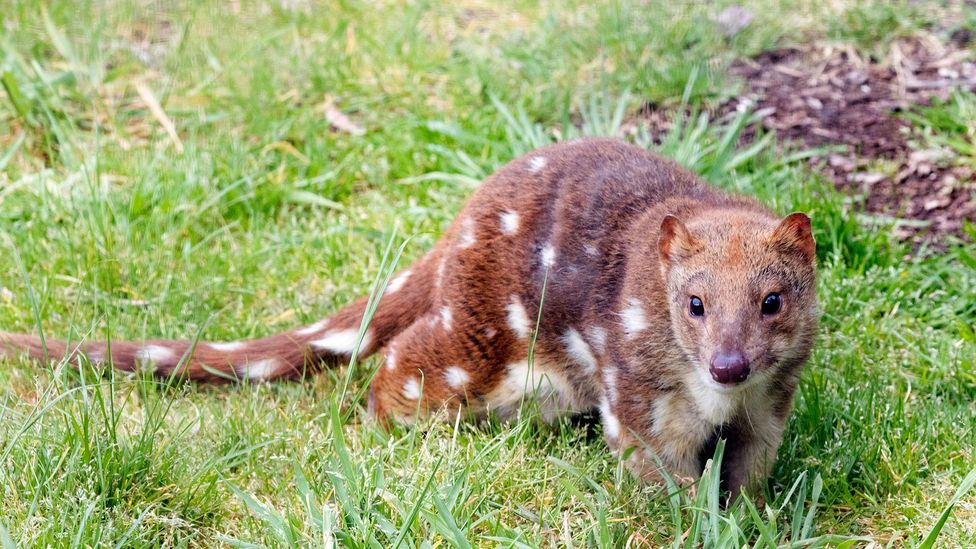
Some species of Australia's quolls already have been fabricated locally extinct past invasive species, a trend that will intensify with climate change (Credit: Getty Images)
Another source of doubtfulness has to do with life forms' capacity to adapt. Take ectotherms (cold-blooded animals like reptiles and amphibians), which accept historically been slower to adapt to climatic modify than endotherms. For one thing, they are less able to adjust their body temperatures. But there are exceptions, like the American bullfrog, which may really find more habitable environments as a consequence of warming.
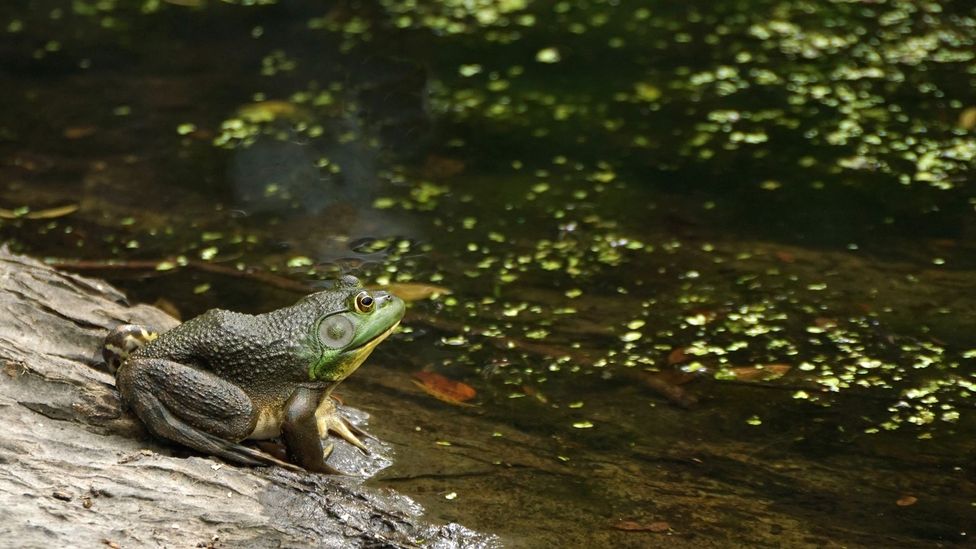
The American bullfrog could be one of few species to benefit from global warming (Credit: Getty Images)
And, of course, there is an alternative: we humans could get our acts together and stop the climate crisis from continuing to snowball by adopting policies and lifestyles that reduce greenhouse gases. But for the purposes of these projections, we're assuming that's non going to happen.
Tenacious trends
Even with the uncertainties, we tin can make some educated guesses about broad patterns.
Heat tolerant and drought resistant plants, like those establish in deserts rather than rainforests, are more likely to survive. Then are plants whose seeds can be dispersed over long distances, for instance by wind or sea currents (like coconuts), rather than by ants (similar some acacias). Plants that can adjust their flowering times may also be better able to deal with higher temperatures. Jen Lau, a biologist at Indiana University Bloomington, suggests that this may give non-native plants the advantage when it comes to responding to climatic change.
Nosotros also tin can look to history equally a guide. The fossil record contains signs of how species have coped with previous climatic shifts. At that place are genetic clues to long-term survival too, such every bit in the hardy green microalgae that adapted to saltier environments over millions of years – a finding only made in September 2018 by Fatima Foflonker of Rutgers and colleagues.
Chiefly, though, the uniquely devastating nature of the current human-made climate crisis means that we tin't fully rely on benchmarks from the by.
"The climatic change that we come across in the future will differ in many ways from the climate modify that we've seen in the past", notes Jamie Carr, an outreach officer for the Climate Change Specialist Grouping of the IUCN Species Survival Committee.
The historical record does signal to the tenacity of cockroaches. These largely unloved critters "have survived every mass extinction event in history and then far", says Asmeret Asefaw Berhe, a soil biogeochemist at the University of California, Merced. For case, cockroaches adapted to an increasingly arid Australia, tens of millions of years ago, by starting to burrow into soil.
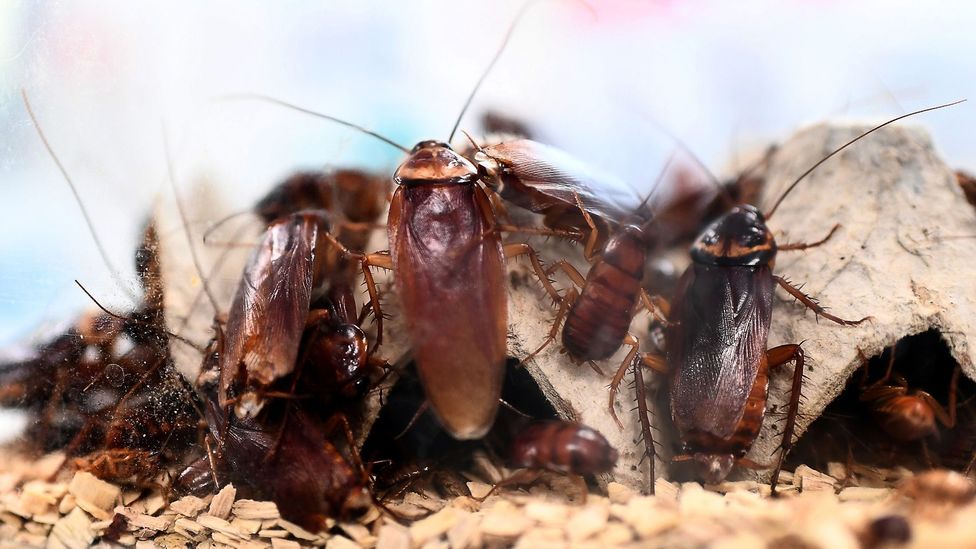
Cockroaches accept survived every mass extinction event in history thus far (Credit: Getty Images)
This shows two characteristics, says Robert Nasi, the director general of the Center for International Forestry Research (CIFOR): an "ability to hide and protect in buffered conditions (eastward.thou. cloak-and-dagger)" and a long evolutionary history, equally in general "ancient species appear more than resilient than younger ones". These are among the traits that, Nasi says, are linked to surviving large catastrophic events which triggered major changes in climate.
Cockroaches also tend to not be picky eaters. Having wide diets means that climate change will be less of a threat to the food sources of species that are not too fussy well-nigh their nutrient, such equally rats, opportunistic birds, and urban raccoons.
Equally a comparison, take an animal like the koala. Koalas swallow primarily eucalyptus leaves, which are becoming less nutritious due to increasing CO2 levels in the temper. Equally a event, climate change is increasing their risk of starvation.
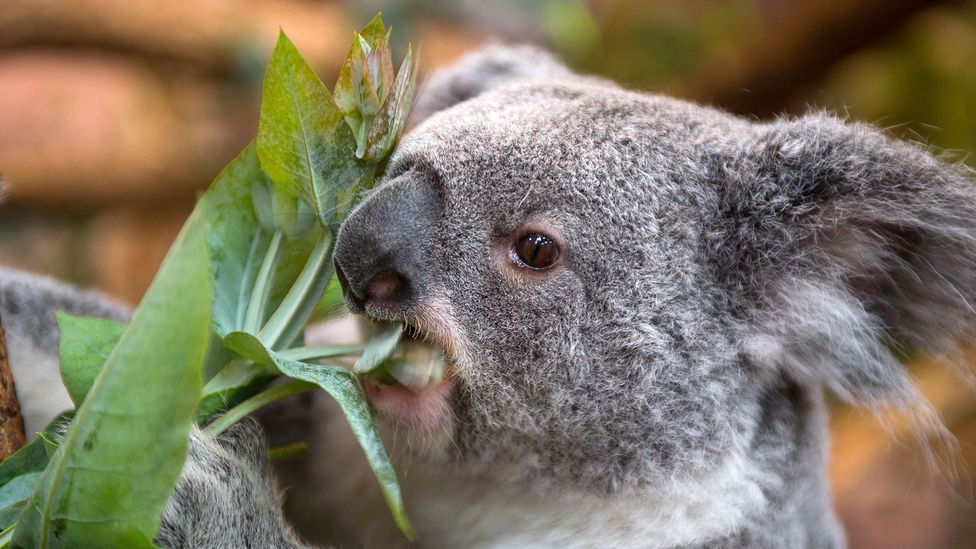
Climatic change is increasing the risk of starvation for koalas (Credit: Getty Images)
Likewise as having a specialised diet, koalas accept low genetic diversity – one reason that chlamydia has ravaged wild koala populations. These are worrying traits in terms of extinction run a risk. "In many cases, specialised species are those that nosotros wait to see disappear first," says Carr. This extends to species in microhabitats like high elevation montane forests, or those in narrow ranges, similar some tropical birds or small-island plants. Besides vulnerable are species that depend on pristine environments.
That's compared to the "early successional" species that succeed in disturbed habitats, such as grasslands and young forest. These species "might do well under climate change considering they thrive in states of change and transition", says Jessica Hellmann, who leads the Plant on the Surround at the Academy of Minnesota. "For instance, deer (in the U.s.a.) are common in suburban areas and thrive where forests accept been removed or are regularly disturbed."
Species that Carr calls "mobile generalists", which can move and conform to dissimilar environments, are likely to be more than durable in the face of climatic change. While this adaptability is generally positive, it might come at a cost to other parts of an ecosystem. Invasive species similar pikestaff toads, which are poisonous, have led to local extinctions of other species like quolls (cannibal marsupials) and monitors (big lizards) in Australia. And Hellmann says that the versatility of invasive constitute species "leads to the worry that, in addition to losing vulnerable species, a warmer world volition be a weedier globe". The weeds typically constitute along roadsides may be specially long-lasting in comparison with other plants.
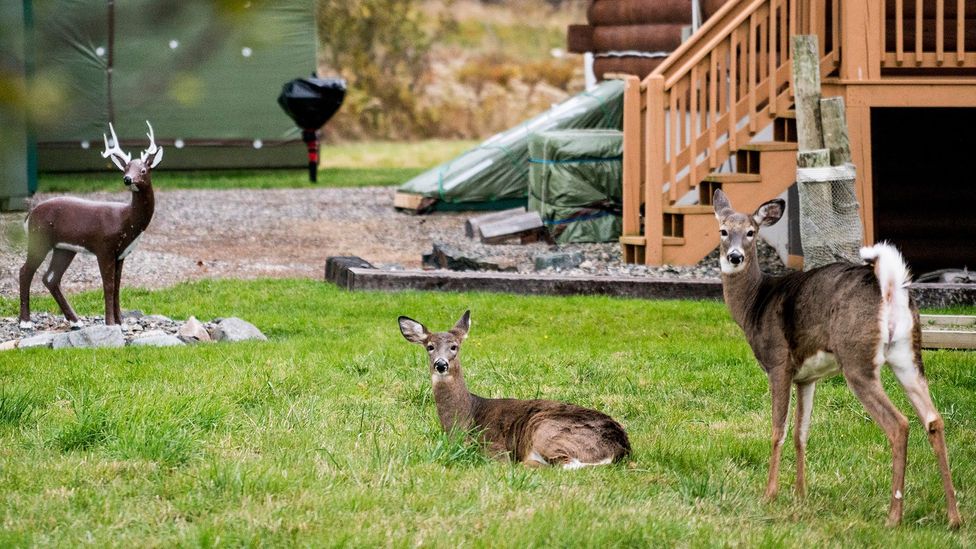
Deer, which thrive in states of modify and transition, may be more resilient (Credit: Getty Images)
Of course, many organisms are intrinsically less mobile. Most plants will be unable to motion quickly enough to keep pace with rapid heating, although they've washed and then in response to the slower climatic changes of the past.
Buffer zones
The good news is that some specialised species might have a buffer known as climate change refugia: areas that are relatively protected from climate alter's consequences, such equally deep ocean canyons. Although deep sea zones are heating up and declining in oxygen concentrations, Jonathon Stillman, a marine ecology physiologist at San Francisco State University, suggests that deep sea hydrothermal vent ecosystems, specifically, might be one brilliant spot in an otherwise mostly bleak situation.
"They are pretty much uncoupled from the surface of our planet and I doubt that climate change will impact them in the least," he says. "Humanity didn't even know they existed until 1977. Their energy comes from the core of our Earth rather than from the Sun, and their already farthermost habitat is unlikely to be altered by changes happening at the sea surface."
Similarly, Douglas Sheil, a tropical forest ecologist at the Norwegian University of Life Sciences, suggests that "at some point in the hereafter the only vertebrate species surviving in Africa might exist a bullheaded cave fish deep underground". As in the deep sea hydrothermal vents, "many species remain undiscovered and thus unknown – Europe'due south first cave fish was only found in Germany in 2015."
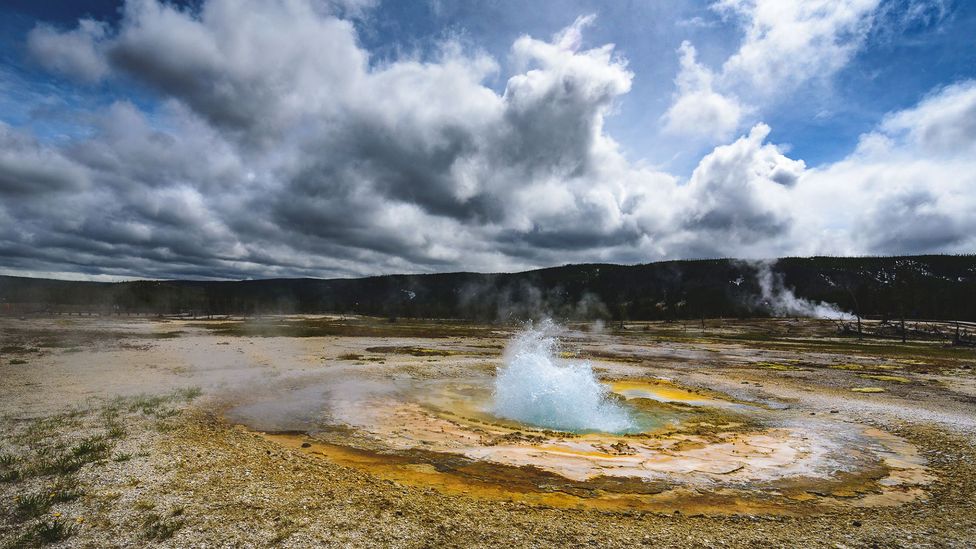
Heat-adapted organisms and microbes living in extreme environments are likely to exist less affected past climate change (Credit: Getty Images)
Thermophiles (heat-adjusted organisms) living in extreme environments like volcanic springs are besides probable to be less affected by surface temperature changes. Indeed, the organisms all-time able to live in severe circumstances are microbes, as noted by many of the scientists I've surveyed. Computer modelling suggests that only microbes would be able to survive increasing solar intensity. Soil biogeochemist Berhe says of archaea, one of the major types of microbes, "these critters have figured out how to live in the most extreme of environments".
Not quite as tiny merely besides most indestructible are tardigrades, commonly known every bit water bears. Ecology physiologist Stillman enthuses: "They can survive the vacuum of outer space, extreme dehydration, and very high temperatures. If you are a Star Expedition fan, you lot have learned most them in a sci-fi setting, but they are real creatures that live across most habitats on World."
The future will have not only more than extreme environments, simply as well more than urban, homo-contradistinct spaces. And then "resistant species would likely exist the ones that are well attuned to living in human-modified habitats such as urban parks and gardens, agricultural areas, farms, tree plantations, and and so on", says Arvin C Diesmos, a herpetology curator at the Philippine National Museum of Natural History.
CIFOR'due south Nasi sums information technology upwards. "The winners will be very small, preferably endotherms if vertebrates, highly adaptable, omnivorous or able to live in extreme conditions."
In the words of the IUCN'south Carr, "It doesn't sound similar a very pretty world."
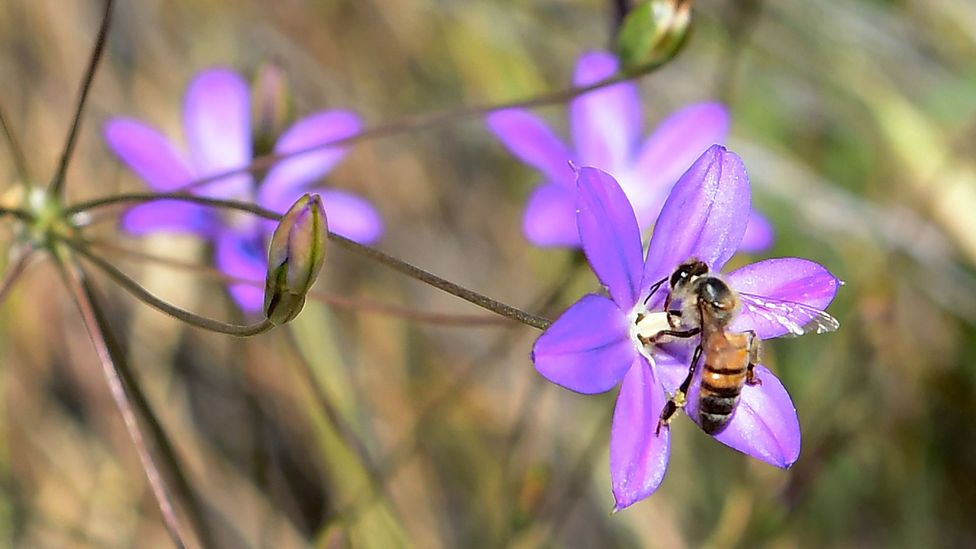
Endangered plants like the Brodiaea are likely to exist increasingly vulnerable with climate change (Credit: Getty Images)
Of course, to some extent we already know what's needed to limit the bleakness of the hereafter natural earth. This includes reducing greenhouse gases; protecting biodiversity; restoring connectivity betwixt habitats (rather than building countless dams, roads and walls); and reducing interrelated threats like pollution and land harvesting. Fifty-fifty species that are shut to extinction, like Saiga antelopes, can be brought back from the brink with plenty conservation effort. To reflect the power of sustained conservation, scientists are developing a Dark-green Listing of species on the road to recovery and full wellness, to complement the IUCN'southward Blood-red Listing of threatened species.
The political barriers are daunting. But scaling them, it seems, would beat surrendering the planet to the microbes.
Join more than than one one thousand thousand Future fans by liking us on Facebook , or follow u.s.a. on Twitter or Instagram .
If y'all liked this story, sign up for the weekly bbc.com features newsletter , called "The Essential List". A handpicked selection of stories from BBC Future, Culture, Capital, and Travel, delivered to your inbox every Friday.
Source: https://www.bbc.com/future/article/20190730-the-animals-that-will-survive-climate-change
Posted by: hutchinshisfack.blogspot.com

0 Response to "What Is The Most Important Thing That A Population Needs To Survive In A Changing Environment?"
Post a Comment